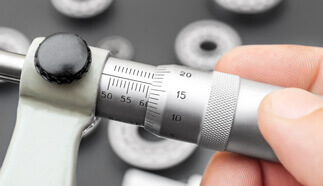SCS Blog
Recent SCS Blogs
Benefits of Conformal Coatings
Manufacturers in the electronics, transportation, aerospace, defense and medical industries have applications that need to withstand elements of heat, cold, rain, snow, vibration, fungus, oxidation and corrosion through decades of operation. Without protection, their applications would not survive these harsh environments. Conformal Coatings Protect Circuit Boards and Electronic Devices from Their Environments Conformal coatings add a... Read More >>
Parylene Process: 5 Keys to Success
Parylene Process: The basic Parylene variant is Parylene N (poly-para-xylylene). Additional variants of Parylene can be achieved via chemical modification to Parylene N main-chain phenyl ring and its aliphatic carbon bonds. Parylene N’s modification by a functional group such as Chlorine and Fluorine leads to Parylene C (poly (2-chloro-para-xylylene)) and Parylene F, respectively. Derivatization results... Read More >>
Top 5 Myths of Parylene
Although Parylene (XY) is a well-recognized and regularly used conformal coating, misconceptions about what it is and can do are common. These mistaken beliefs interfere with true understanding of Parylene’s uses. Five of the most common misconceptions – and appropriate corrective information – should clear things up. 1. Parylene Is Too Expensive for Normal Use.... Read More >>
Conformal Coating Selection: Weighing the Pros and Cons for Your Application
Utilized in medical device, electronics, defense, aerospace and transportation applications, conformal coatings are applied to a product to provide protection from hazardous substances and harsh environments. Optimal protection, however, is contingent upon proper selection of the conformal coating type. This critical task requires engineers to carefully weigh the benefits and drawbacks of the five main... Read More >>

Parylene vs. Potting
If you have a component that needs protection, you typically have a choice between potting and conformal coating. While potting offers the largest and most powerful barrier against external harm, it also carries some significant drawbacks. Conformal coating, especially with Parylene, also offers a protective barrier, but does it without the challenges that potting poses.... Read More >>
5 Key Properties of Parylene
Since its discovery in the 1940s, Parylene has established a strong presence as the ideal conformal coating for a variety of applications. Given its unique blend of properties, it presents itself as an unparalleled conformal coating option, depending on the application being coated. There are several distinct properties of Parylene, including electrical properties, broad temperature... Read More >>
How to Choose a Conformal Coating Company
coating, you may be looking at several options and wondering how to choose a conformal coating provider. This decision requires a great deal of consideration because it can have a significant impact on the product’s quality and your company’s profits and reputation. But what exactly should you be looking for when choosing a conformal coating... Read More >>
Parylene Coating Measurement Methods
Used as moisture and dielectric barriers, Parylene (p-xylylene/XY) coatings are conformal and pinhole free. Applied by a unique vapor deposition polymerization (VDP) method, Parylene penetrates beneath substrate facades, simultaneously attaching above surfaces at the molecular level. VDP generated films cover crevices, exposed internal regions, points and sharp edges uniformly, without gaps or breaches. Compared to... Read More >>

The Parylene Deposition Process
Parylene coating is applied onto a substrate or material through a vapor deposition process. Depending on the Parylene variant and required thickness, Parylene typically deposits at a rate of about 0.2/mils per hour. A Parylene machine run can vary from as little as 1 hour to over 24 hours. The process begins with raw dimer... Read More >>
Parylene Alternatives
Depending on a customer’s application needs, a liquid conformal coating might offer the best alternative to Parylene. The first step in determining which conformal coating to use involves identifying the standards to be used and the customer’s desired protection goals. Some of these alternatives—as well as their overall advantages—include the following: A global network of... Read More >>

